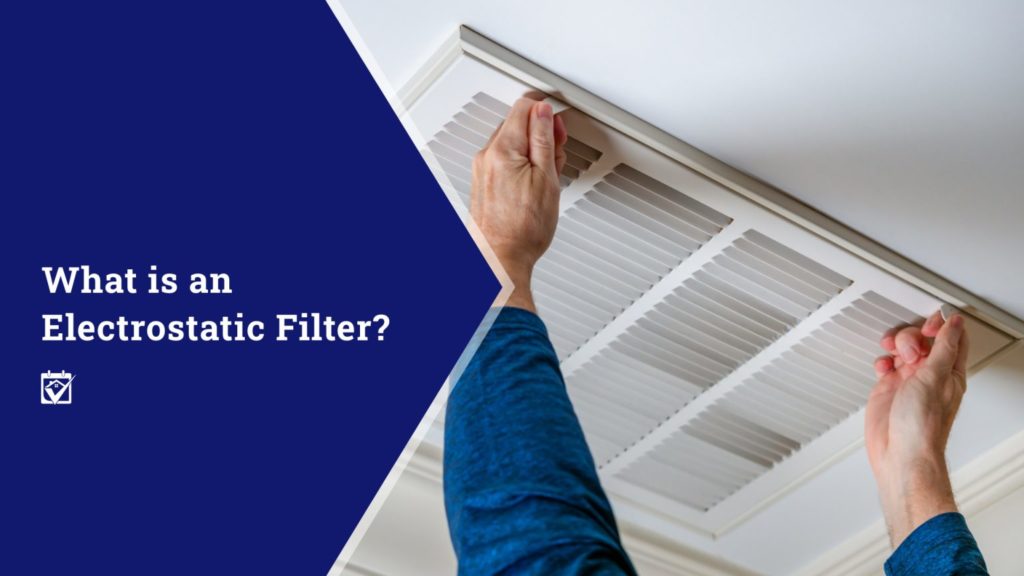
Air filters serve a wide range of purposes in your home. They remove dust and dander from the air, eliminate other allergens, keep some odors under control, and even reduce the wear and tear that your HVAC system experiences throughout the year. Depending on the filters you use, you may even be able to remove some viruses and bacteria from the air to keep the people in your house healthier. With all of the benefits that good air filters provide, the only real downside is that you have to replace them every few months to keep your home’s filtration system filtering at its best.
There are a few other options available when it comes to filter types, however. One air filter that’s increasingly popular with homeowners is the electrostatic filter, which not only provides excellent filtration but is also cleanable and reusable. If you’re not familiar with electrostatic filters or how they differ from the disposable filters that you’re used to, here’s the basics of what you need to know.
How Electrostatic Filters Work
Traditional air filters work by putting pleated material that’s made of a lot of material fibers in the way of air moving through your system, allowing the air itself to pass through but catching dust and other unwanted material on those fibers. It’s fairly effective, but if there aren’t any fibers in the way of any given particle then the particle will pass through without resistance. Electrostatic filters work differently, actually attracting those particles even if they would otherwise be able to pass through the filter unimpeded.
This attraction is caused by static electricity, which is the same thing that causes socks to stick to your clothes in the dryer and can make balloons stick to the wall if you rub them in your hair. These filters carry a slight static charge, allowing them to attract even microscopic particles that would normally be too small for a filter to stop. Particles passing through the filter become ionized, meaning that they pick up a charge themselves which causes them to have a natural attraction that pulls them toward a collecting layer in the filter. Once the particles are attracted to the filter, they become stuck, just like that proverbial sock or balloon.
Cleaning and Maintenance
One positive of traditional pleated filters is that they become more efficient as they build up more dust and other particles; because the stuff filtered out of the air clogs up holes that small particles could pass through in the filter, it becomes less likely that additional particles will pass through. Unfortunately, this isn’t an advantage that electrostatic filters share. As electrostatic filters attract dirt and other particles out of the air, the available attractive material becomes covered up and they actually become less efficient. The good news is that this can be taken care of simply by cleaning the filter.
Cleaning an electrostatic filter is a pretty straightforward process. After turning off the HVAC system and removing the filter, simply take it outdoors and spray it with a hose in the opposite direction that the air would normally flow. Keep rinsing until the water comes out clean, then allow the filter to air dry. Once it’s dried, simply reinstall the filter and it’s ready to start filtering fine particles out of the air again. Repeat this process once a month or whenever the filter appears dirty.
Should You Upgrade Your Home’s Filtration?
Though electrostatic filters cost more up front, the ability to clean them and the greater efficiency that they show when clean means that you can actually save money on filters in the long run. Making the switch is definitely worth considering, and might be worth discussing with an HVAC professional when you schedule a maintenance check before switching on the heat this winter.
If you have questions you may contact me to see how I can help you.
Michelle Lohman, Associate Broker
Realty One Group

All content provided on this blog is for informational purposes only. The owner of this blog makes no representations as to the accuracy or completeness of any information on this site or found by following any link on this site. The owner will not be liable for any errors or omissions in this information nor for the availability of this information. The owner will not be liable for any losses, injuries, or damages from the display or use of this information.

Leave a Reply
You must be logged in to post a comment.